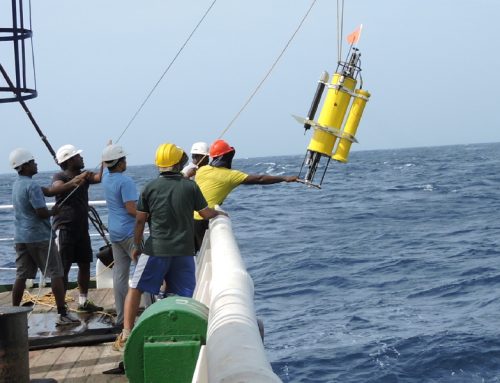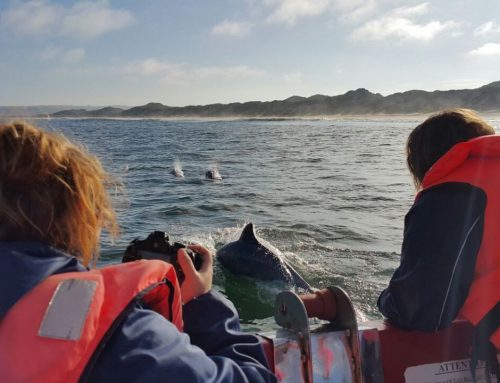 “Africa is long on junk and short on power. There is an obvious opportunity here to re-think how we can use waste to generate power. To this end we are increasing our activity throughout the African continent,” says Kevin Whitfield, Head of Carbon at Nedbank Capital.
“Africa is long on junk and short on power. There is an obvious opportunity here to re-think how we can use waste to generate power. To this end we are increasing our activity throughout the African continent,” says Kevin Whitfield, Head of Carbon at Nedbank Capital.
Suitable carbon projects that the Nedbank can monetize on the African continent are being identified, including renewable energy, waste-to-energy and energy efficiency initiatives and technologies, which either offset or reduce the carbon footprint.
On a recent trip to China Whitfield viewed biodigester technology and landfill gas technology for clients in South Africa, Namibia in Ghana. “We have a very hands-on approach to financing projects and we looked at similar technology in several countries to assess its efficiency and functioning. In this instance the Chinese technology was best suited to our clients’ needs.”
The biodigester is essentially a waste-to-renewable-energy production system. It comprises a tank or series of tanks in which microorganisms break down biodegradable waste and sewage, producing a methane- and carbon dioxide-rich biogas, which is a viable source of renewable energy. In the absence of this kind of technology, the gas from waste matter is released into the atmosphere, increasing the carbon footprint.
Landfill gas technology extracts the methane- and carbon dioxide-rich gas from rubbish dumps or landfills via boreholes driven into the waste, and converts it to renewable energy. Without this kind of technology the gas is released into the atmosphere.
“These are well established technologies which are now gaining the attention and investment they deserve on the African continent which is starved of energy but high on waste,” says Whitfield.
“The rising cost of electricity has triggered the need to look at alternative technologies for generating energy. As part of this, natural resources of energy such as the wind, sun and water are no longer being taken for granted. Today, they are being carefully assessed and valued for their power-generating potential, and we will see an ever-increasing number of renewable energy projects coming onto the road map.”
Africa has “immense opportunities to take the lead” in renewable energy, waste-to-energy and carbon footprint reduction initiatives, comments Achim Steiner, head of the United Nations Environmental Programme, citing wind farms in Kenya and methane-to-electricity projects in Rwanda as two examples.
Africa’s largest wind power generation project to date is a 300-megawatt (MW) wind farm in northwest Kenya near Lake Turkana.
Using the latest wind turbine technology the Lake Turkana Wind Power consortium will provide reliable and continuous clean power, adding 30% or more to the total existing installed capacity in Kenya of approximately 1200 MW.
The ‘wind farm’ will be built on 150 000 acres of land and feature 353 wind turbines, each with a capacity of 850 KW. The financing structure is currently being finalised and the first phase of production is expected to start in June 2011, to reach full its full capacity of 300 MW around July 2012.
“It is not inconceivable that Kenya will triple, even quadruple its power generation and reduce in absolute terms its C02 emission, and perhaps become a CO2 neutral electricity generating economy,” comments Steiner.
The obvious question is why South Africa isn’t building wind and solar power generation projects of this magnitude here at home. The answer, as Whitfield explains, is that these projects are only as good as the agreement to sell power to the national power provider.
“Eskom and Nersa (South Africa’s energy regulatory authority) are finalising agreements for such projects to sell power into the national grid at a specific price for a specific period,” says Whitfield.
“Nedbank and several other South African international financial institutions are actively looking at renewable energy projects in South Africa and Africa. A lot of feasibility testing work on solar and wind power generation projects has been done, but any interim agreements to finance these projects remain subject to the power purchase agreements. We are all keen to move forward and feel optimistic about the fact that the National Climate Change Response Policy (NCCRP) has been submitted to cabinet.”
This policy is both an enabling framework and an actual plan for mitigation and adaptation to climate change. The South African government has committed to a national climate change policy and everything we do from now has to be conscious of the environment.
“All sectors are well aware of the urgent need for renewable energy in South Africa,” comments The Green Trust’s climate change project leader and WWF’s national climate change officer, Louise Naudé.
“The fear that renewable energy cannot deliver the amount of energy we need is completely unfounded. We have limitless supplies of sun and wind and the technology to harness these natural energy sources at a macro level is well developed and proven in countries like Spain,” adds Naudé.
And, unlike sourcing uranium from Russia for nuclear energy which comes with externally imposed terms and conditions, with the sun and the wind we have absolute security of energy supply, harnessed and managed by ourselves.
Whitfield is buoyant about things to come. “This is one of the most exciting eras ever to face the continent: one in which so many problems can be solved simultaneously. Energy problems, health problems, development problems…all these can all be solved through sound renewable energy initiatives on a national scale, and at the same time we are saving the natural environment. It’s inspiring to be involved in these initiatives and it is a privilege to be part of this magnitude of change.”
For more information about the Lake Turkana Wind Power Project: www.laketurkanawindpower.com




